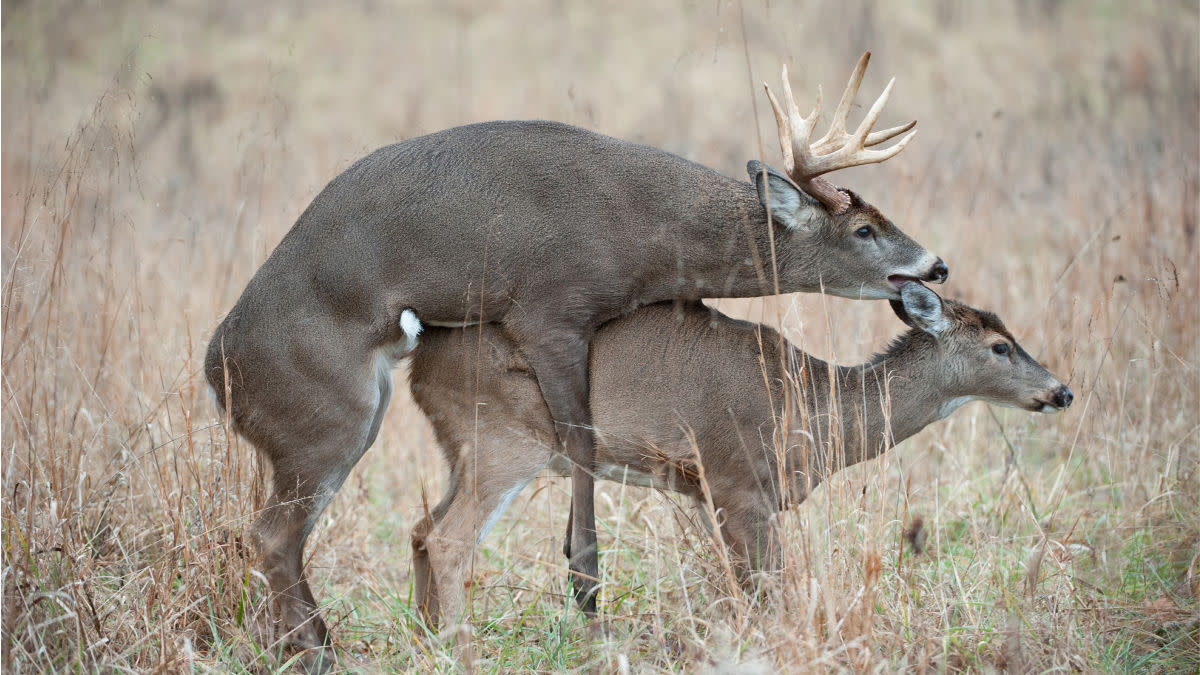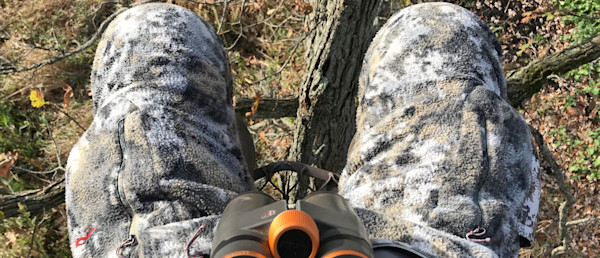
I remember my first time like it was yesterday.
It was November 5. The air was crisp and the trees held their leaves by a thread. A doe slipped silently into the green field ahead of me, with a buck of magazine cover proportions trailing behind her. She flicked her tail twice, stood still, and looked over her shoulder as the 10-pointer sauntered up behind. He took a moment to compose himself and then mounted the doe.
It was the first time I’d personally seen a buck breed a doe. What I saw then and what I observed over the next few days opened my eyes to a unique hunting opportunity and eventually led to killing my largest buck to date.
What Lockdown Looks Like
When a buck and doe couple up it’s commonly referred to as being “locked down.” It occurs most often in mid-November. This is what hunters call the “lockdown phase” of the rut.
Up until this point, before a doe is ready to breed, she will run away from prospecting bucks, inspiring the chases so many hunters look forward to each November. But when a female finally comes into heat and is willing to mate, she will end the chase and allow a single buck to lay claim. This is what I witnessed on that November evening.
The two deer will typically travel together over a small distance or hole up in one spot until the doe stands in place for the buck to breed her. I saw this take place and then observed the buck standing over the doe for nearly an hour in the same location before slowly moving with her into a nearby brushy field.
This behavior is typical of a buck and doe in the lockdown phase. I’ve read in various reports that a buck can be locked on a doe for anywhere from 24 to 72 hours. This proved to be true in my observation. The next morning the two deer were in almost the exact same place, moving from the brushy field slowly back past that green food source, and then into another nearby bedding area.
The next day was the same story. The 10-pointer stayed very close to the doe and only left when he had to scare off other bucks that wandered too close. The long periods holed up in an unusual place is common for locked down deer.
How To Take Advantage
While many hunters complain about the lockdown phase, I see it as an opportunity. If you can get eyes on a buck and doe locked down, you have a rare window where that buck’s behavior will be incredibly predictable.
Based on previous experience and research, I knew it was likely that this buck and doe would be near the brushy field and small food plot for the next day or two after my initial sighting. With that being the case, I aggressively positioned myself each morning and evening to get as close as possible to their slightly changing route. Wherever I left them in the evening, I assumed they’d be close by the next morning. I accessed my stands accordingly, making sure my wind and walking path wouldn’t disturb them. To do this I had to take long, roundabout access routes to my stands, but it paid off with close encounters each day. Not only will a buck and doe stick to a small area during their courtship, they’ll often travel a similar circuit. If you observe them go past a specific tree, it can pay to move into range for the next sit.
This was how I spent the next two days, and while I got close several times, I was never quite close enough to get a shot with my bow. Still, seeing this firsthand gave me new insight into the lockdown phase and armed me with a newfound confidence.
Implementing the Lesson
One month later, in early December, I glassed this very same buck with a doe that had obviously come into heat during the “second rut.” He was tight on her trail and pushing off young bucks trying to get close. I watched them leave the same brushy field he and the original doe frequented before, and then observed as they passed through the green field and into the neighboring bedding area. I was confident he was locked on this doe and I knew just what to do.
Despite a risky wind, I waded a creek and moved in that afternoon to hunt tight to the same route they took in the morning. If the pattern held true, she’d lead him right back out that evening. At last light, the doe stepped out of the bedding area with the big 10 right behind her. My hunch was right, and my shot was true.
Feature image via Matt Hansen.








Conversation